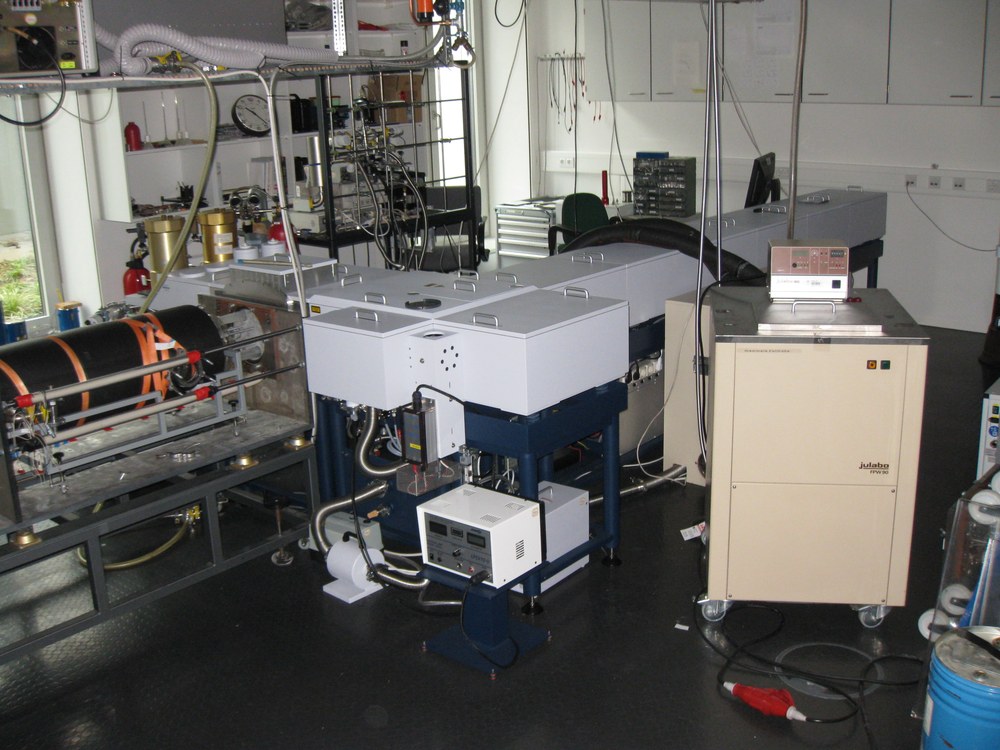Laboratory Spectroscopy
Laboratory Spectroscopy of atmospheric constituents from the far infrared to the UV range
Remote sensing for determining the distribution of atmospheric trace gases relies on line parameter spectroscopic databases (e.g., HITRAN, GEISA, or JPL) for line positions, line strengths, pressure broadening parameters or absorption cross sections. The database is mandatory for linking the characteristic spectral signature obtained by remote sensing to the trace gas distribution in the atmosphere. Remote sensing of the atmosphere is carried out from ground-, airplane-, balloon-, or satellite-based platforms. The spectroscopic database is mostly obtained from laboratory experiments.
High accuracy intensity measurements
The extension of the spectroscopic database of atmospheric trace gases requires accurate measurement of spectral intensities and line shapes. Whereas the accurate determination of line positions from Fourier Transform (FT) spectra can be achieved easily, the measurement of intensities is hampered by numerous systematic error sources which have to be characterized and minimized. At DLR, for the first time, line strengths were experimentally determined with FT-spectroscopy with an accuracy better than 0.15%. This was achieved by extending the line model in combination with multispectrum fitting and other improvements.
Spectrometer
The FT spectrometer at DLR is a commercial high-resolution BRUKER IFS 125 HR instrument covering the spectral range from 10 to 50000 cm-1 with a maximum resolution of 0.001 cm-1 (30 MHz). The instrument can be evacuated to avoid absorption of radiation by water and carbon dioxide in the ambient air. The spectrometer is equipped with a number of highly sophisticated absorption cells covering absorption paths from 0.15 m to 200 m and temperatures from 200 K to 350 K. Several sensitive detectors cover the entire electromagnetic spectrum from Far Infrared to UV. For the Mid Infrared region the detector optics was optimized to yield sensitivities up to 10 times higher than standard commercial detectors.
Gas cells
Several gas cells have been developed:
- multireflection cell (adjustable absorption path up to 200 m, temperature range: 200-350 K). The cell’s outer body as well as the movable optical components contained by it can be tempered individually. In combination with the recently improved thermal insulation to reduce the heat transfer with the surroundings, a temperature inhomogeneity smaller than 1 K is achieved. The accuracy in temperature at room temperature is better than 0.1 K. The newly revised mechanics and the introduction of cameras to observe the beam path in the inside of the cell led to a significant improvement in precision, stability and reproducibility of the adjustment, also in spectral regions invisible to the naked eye.
- coolable cell (0.25 m, 190-330 K). Innovative design allows measurements of various spectral regions without replacement of the installed windows.
Technical details of the lab infrastructure can be found in the flyer (see link).

